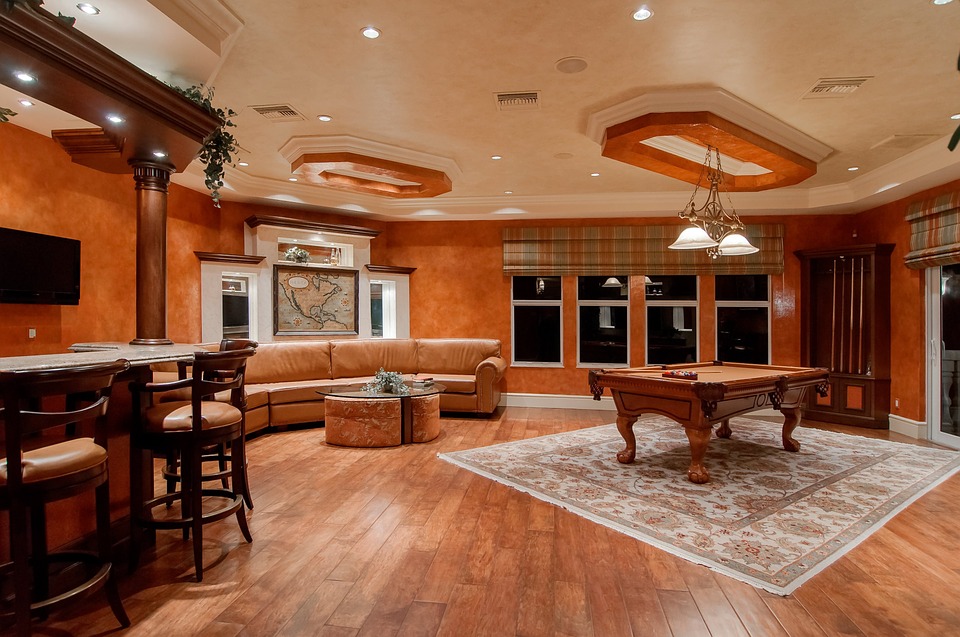
Your home should be your sanctuary; a place where you can kick back, relax and feel comfortable. A cluttered and claustrophobic environment can easily intrude on this comfort. The good news is that you don’t need to own a huge home to create a sense of space. If it is space you are after but have no idea of where to begin, here are six design tips to make your home feel bigger.
-
Be selective with your décor
While décor is important in creating an aesthetic, cluttering your smaller home with excessive décor will do the opposite of creating a relaxing environment. Instead, it will make you feel cramped and claustrophobic. Mirrors and glass décor are a popular choices for smaller spaces as they are synonymous with creating a sense of space and the illusion that there is more to the room than exists. Bent wire items are also great for creating an illusion of space.
When choosing furniture for your home, make sure that you focus on producing a vertical effect. Some ways of achieving this is to choose furniture with legs, opt for a lofted bed and oversized art – this all draws the eye upward, adding length to the room.
-
Declutter
Not only is minimalism a trending aesthetic style, but it also opens up space in the home. Decluttering your space has the potential to make a room feel significantly larger. The basic steps of decluttering include categorising your belongings as you systematically tidy out your space and discard items that you no longer want, donate quality items that you no longer have use for and strategically store items that you plan to use at a future time (or hold too much sentimental value to discard).
The last of these groups of belongings can be the trickiest to deal with. Where do you store items that you don’t have space for in your home? The answer is incredibly simple – self storage. An increasing number of self storage facilities are popping up across the UK as more and more people realise the benefits that the service offers. Most facilities are conveniently located with reasonable prices for self storage units, which makes it an even easier choice. How safe is self storage though? Most reputable self storage companies have units that are monitored by CCTV surveillance and individually alarmed. With many facilities offering 24-hour access, self storage has become a wonderful extension of the home.
-
Paint your walls in light colours
Painting your walls in light colours will allow for the light in the room to reflect and create an illusion of space, while darker colours make a room feel smaller. If you want to make the room appear larger, opt for whites or monochromatic schemes of greys, creams and yellows. Lighter, cool colours will encourage a feeling of openness.
Note: the ceiling is essentially a fifth wall. Painting your ceiling a light colour will maximise on the feeling of space by reflecting light and complementing the walls.
-
Take advantage of natural light
One of the easiest ways to open up space in a home is to take advantage of natural lighting by uncovering windows or using sheer coverings. Not only does this add a bright airiness to the room, but it also expands the space of the room to include the outdoors. How you choose to hang your curtains also plays a role in the amount of light that enters the room, and how much space the room appears to have. Shorter curtains that fit your window perfectly have the potential of stunting the length of the space. Choosing to hang your drapes near your ceiling and extend them past the window frame can add to the illusion of larger windows and a greater space.
-
Choose ‘smart’ furniture
Chances are that your home is already furnished, and it would be a waste to get rid of useful furniture. If your budget allows, you could consider selling your current furniture to subsidise the purchase of new furniture that serves multiple purposes. Alternatively put the larger items into self storage for later use. Today, design has developed to a point where there is a wide variety of multifunctional furniture pieces that serve more than one purpose. For example, an ottoman can hold items as storage and be sat on at the same time.
-
Layout
Simply laying out your furniture strategically can make the world of difference to the space in your home. Some tips for layout include never allowing furniture to block pathways or light sources, filling up corners of the room with the likes of a corner bookshelf and prioritising large furniture items, planning smaller pieces around them. It’s time to open up your home to more space, and less stress!


